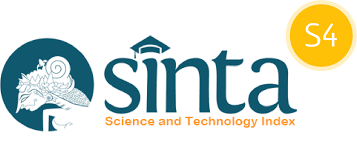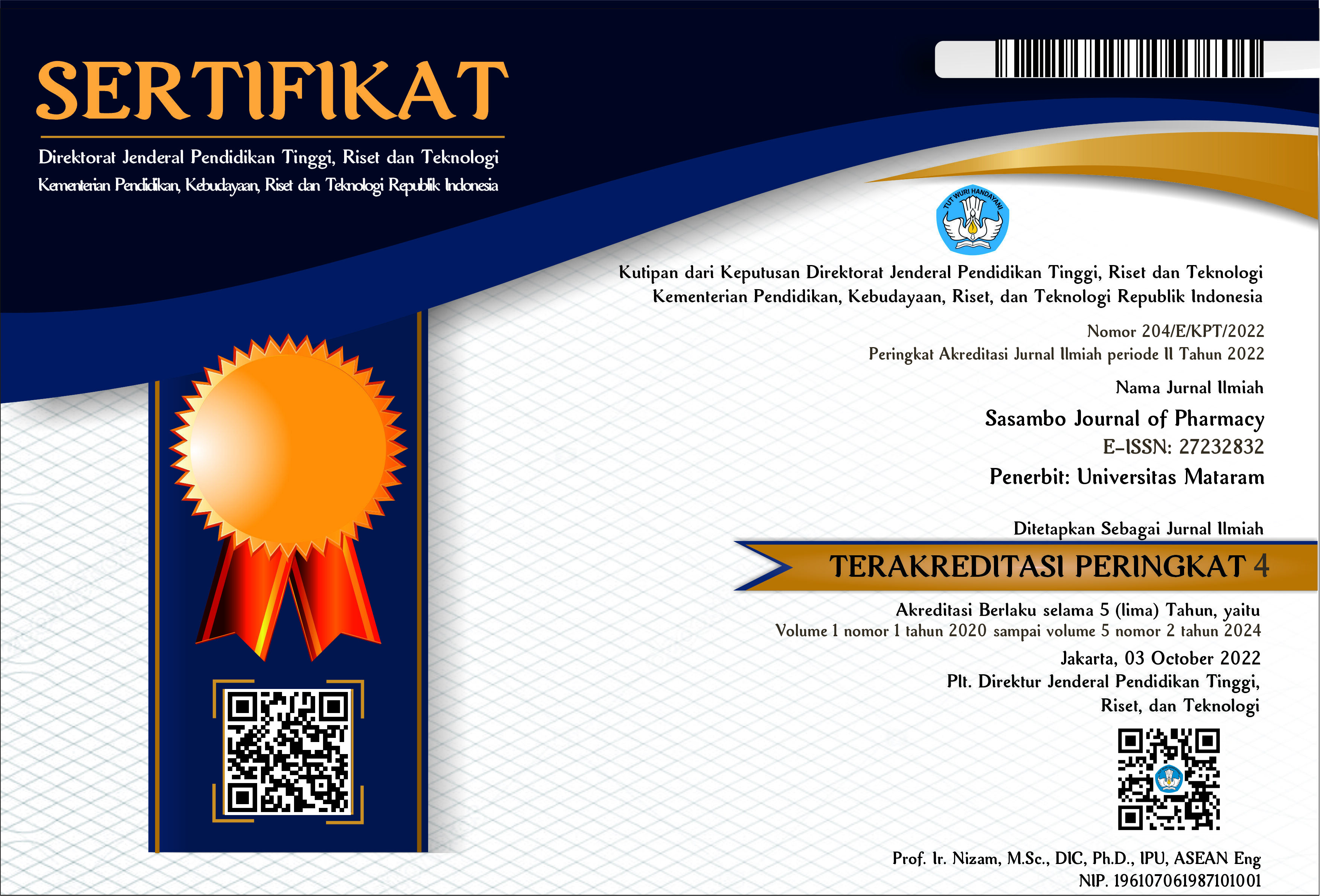Pengukuran omega-3 pada ikan penja (Awaous sp.) asal Polewali Mandar Provinsi Sulawesi Barat
DOI:
10.29303/sjp.v4i2.256Downloads
Abstract
Omega-3 is an essential fatty acid necessary for human health. It has anti-inflammatory properties, reduces the risk of cardiovascular disease, and is needed for brain development. The three main omega-3 fatty acids are alpha-linolenic acid (ALA), eicosapentaenoic acid (EPA), and docosahexaenoic acid (DHA). Penja fish is a typical marine biota of Polewali Mandar, West Sulawesi, which is believed to be rich in omega-3. The research aimed to determine the omega-3 content in penja fish (Awaous sp.) from Polewali Mandar, West Sulawesi Province. Penja fish was extracted using the Soxhlet method, and then the fatty acid content was analyzed by GC-MS. The results of this study show that penja fish extract (Awaous sp.) contains omega-3 consisting of 2.64% linolenic acid, 0.94% eicosapentaenoic acid (EPA), and 1.17% docosahexaenoic acid (DHA). The total omega-3 content in penja fish (Awaous sp.) is 4.75%. Â
Keywords:
Fatty acid, Omega-3, Penja fish (Awaous sp.)References
Alim, N., Hasan, T., Rusman, R., Jasmiadi, J., & Zulfitri, Z. (2022). Phytochemical Screening, Relationship of Total Phenolic with Antioxidant Activity Of Ethanol and Methanol Extracts of Kesambi (Schleichera oleosa (Lour.) Oken) Bark. Jurnal Ilmiah Sains, 22(2), 118. https://doi.org/10.35799/jis.v22i2.40091
Chuang, L. T., Bülbül, U., Wen, P. C., Glew, R. H., & Ayaz, F. A. (2012). Fatty Acid Composition of 12 Fish Species from the Black Sea. Journal of Food Science, 77(5). https://doi.org/10.1111/j.1750-3841.2012.02661.x
Farmakope VI, K. R. (2020). Farmakope Indonesia edisi VI. In Departemen Kesehatan Republik Indonesia. https://perpustakaan.bsn.go.id/index.php?p=show_detail&id=14835
Hasanuddin, R., Jasmiadi, J., & Abdillah, N. (2021). The Analysis of the Chlorogenic Acid in the Ethanol Fraction of Robusta Coffee Beans and Its Effect on Glucose Levels in Wistar Rats. Disease Prevention and Public Health Journal, 15(2), 118. https://doi.org/10.12928/dpphj.v15i2.4705
Hasmar Fajriana, F. R. M. (2019). Analisis Kandungan Gizi Tepung Ikan Penja (Indigenous spesies) pada Berbagai Metode Pengeringan. 21(2), 61–66. https://doi.org/10.29238/jnutri.v21i2.133
Isnani, A. N. (2013). Ekstraksi dan Karakterisasi Minyak Ikan Patin yang diberi Pakan Pellet dicampur Probiotik Skripsi. Fakultas MIPA Universitas Jember.
Lubert, Stryer, Jeremy M. Berg, J. L. T. (2002). Biochemistry (5th Ed, US).
Sukarsa, D. (2004). Studi Aktivitas Asam Lemak Omega-3 Ikan Laut pada Mencit sebagai Model Hewan Percobaan. 7(1), 68–77.
Usman, M. Y., Sains, F., & Teknologi, D. A. N. (2016). Analisis Variasi Genetik Ikan Penja Indigenous Perairan Polewali Mandar Sulawesi Barat dan Ikan Nike (Awaous sp.) Indigenous Perairan Gorontalo.
Wardana D, et. al. (2019). Utilization of Glycerol from Used Oil as an Ester Glycerol Surfactant. In Indonesian Journal of Chemical Science and Technology (IJCST) (Vol. 02, Issue 2). https://doi.org/10.24114/ijcst.v2i2.13999
Yasser, M., & Widiyanti, S. E. (2017). Modifikasi dan Karakterisasi Nanopartikel Emas-Ekstrak Daun Jati dengan L-Sistein, In Seminar Nasional “Tellu Cappa†(pp.404-407).
License
Copyright (c) 2023 The Author(s)

This work is licensed under a Creative Commons Attribution 4.0 International License.
Authors who publish with Sasambo Journal of Pharmacy (SJP), agree to the following terms:
- Authors retain copyright and grant the journal right of first publication with the work simultaneously licensed under a Lisensi Creative Commons Atribusi 4.0 Internasional. This license allows authors to use all articles, data sets, graphics and appendices in data mining applications, search engines, web sites, blogs, and other platforms by providing an appropriate reference. The journal allows the author(s) to hold the copyright without restrictions and will retain publishing rights without restrictions.
- Authors are able to enter into separate, additional contractual arrangements for the non-exclusive distribution of the journal's published version of the work (e.g., post it to an institutional repository or publish it in a book), with an acknowledgment of its initial publication in Sasambo Journal of Pharmacy
- Authors are permitted and encouraged to post their work online (e.g., in institutional repositories or on their website) prior to and during the submission process, as it can lead to productive exchanges, as well as earlier and greater citation of published work (See The Effect of Open Access).







